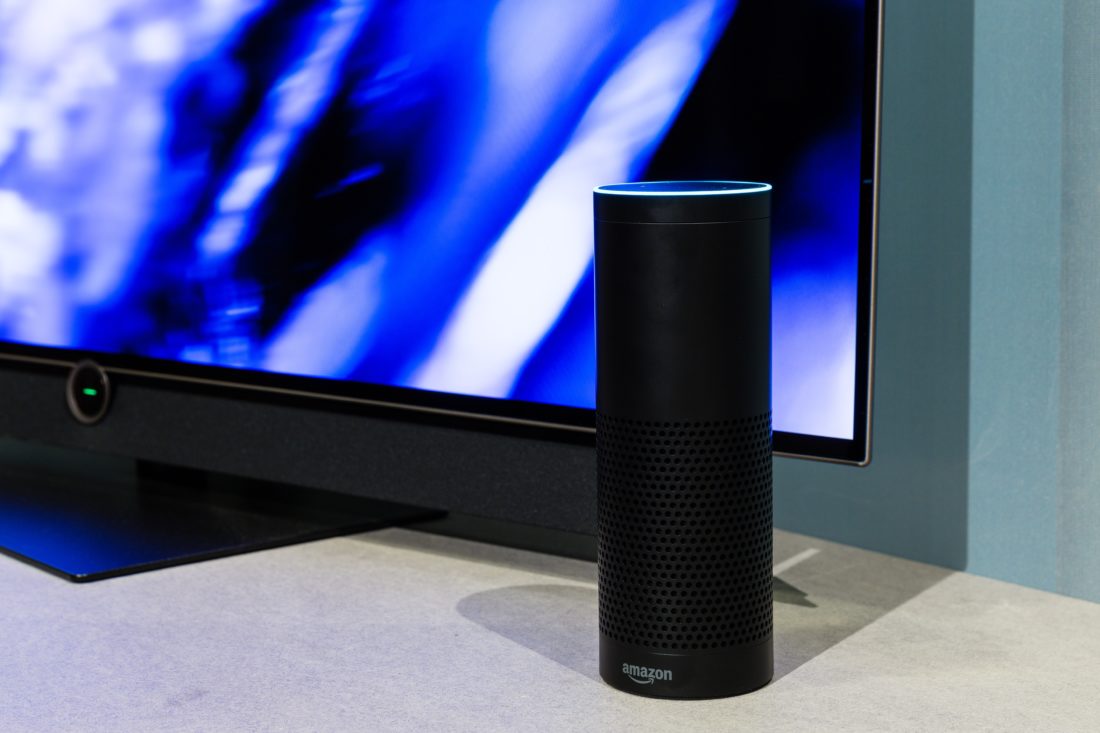“Alexa! What’s the weather today and how can I best utilize your technology to implement a successful branding strategy without the inherent benefit of a paid ad campaign?”
The Voice
Promoting your brand on voice-enabled devices these days can be a frustrating task at best. Smart devices like Amazon Echo (Alexa), Google Home (Assistant), Apple HomePod (Siri), Samsung (Bixby) and Microsoft (Cortana) continue to upset the balance by growing their consumer bases and potential revenue opportunities exponentially while not accepting paid advertising—at least, not yet.
There are a few signs that strict advertising restrictions could loosen up. In 2019, for example, Amazon rolled out Amazon Music stations and playlists to its non-Prime Echo users that will include ads. However, indirect product marketing will continue to take center stage.
Today more than one in four adults in the U.S. own a smart speaker, and 40% of those have two devices in their home. It’s easy to see why. Voice devices are user-friendly, affordable (Echo Dot retails for $50 and under) and remarkably intuitive (if not just a little creepy).
Searching for products and services by simply asking Alexa means that, as a digital society, we could quite literally never touch a keyboard again. And voice search is only going up. In 2018 alone, there was an average of one billion voice searches every month. And by next year half of all online searches will be conducted through voice search.
This is where the marketing industry can catch a break. According to Google, more than half of speaker owners say they’d like to hear about deals, sales and promotions from brands.
Shop Talk
Amazon reported that holiday shopping through Alexa more than tripled in 2018 compared to 2017. Why go back to typing queries or keywords into a search engine—whether you’re looking for kitchen gadgets or the perfect pair of novelty socks—when you can get top results by asking your device?
According to Voicebot.ai, voice commerce is the “biggest potential revenue opportunity that justifies the enormous investment being made in voice assistants.”
U.S. ecommerce conducted by smart devices and speakers is expected to increase more than 50% in 2019. Although that would still account for less than 1% of total ecommerce, that figure shows no sign of slowing down. According to eMarketer research, 31 million people in the U.S. will shop via smart devices in 2019, an increase of more than 30% from 2018.
So how can marketers take advantage of this trend when traditional advertising is left out of the equation? A good start would be customizing SEO for voice search and creating interactive personalized content.
Search Me
For optimal search results which could drive additional traffic to your site, you should first focus on formatting your content correctly. This is a good practice for competing for the coveted “position zero,” which helps ensure your products and/or services are featured. The basic tenet of SEO is to rank websites accurately so users can find the best information for their search query as quickly as possible. In that respect, voice search isn’t much different.
Ultimately user experience is at the forefront of voice search optimization. Therefore brands need to enhance their interfaces for compatibility with voice. For example, when a user asks a question, Alexa can search Spotify inventory, scan Wikipedia or shop on (naturally) Amazon. One of the few exceptions to the Alexa ad-free policy is when a user searches for deals and promotions.
Although voice SEO and traditional SEO share some similarities, factors that affect website rankings may or may not have the same effect on voice search, and vice versa. The trick is in the compatability and formatting based on interface.
Marketers can best optimize voice search through customizing content and creating featured snippets. Keep in mind that the average voice search result is 29 words long. Also, Google voice search results can increase brand recognition through two little words: “According to [insert your brand here].” Taking advantage of localized content, i.e. when a consumer asks for a product or service “near me,” can also help leverage SEO results.
Voice search tends to work best with a conversational tone. In other words, when creating content specific to smart speakers, it’s best to write how you talk, not how you write.
Gaming the System
An increasing number of brands are exploring how to better engage their target audience. This could include such innovative methods as storytelling, games, quizzes, podcasts, jokes and other interactive content. For example, HBO created the popular interactive Westworld game. Similarly Netflix promoted the second season of “Stranger Things” with an audio game.
And who would guess that dog food could be such a heavy hitter in voice SEO? Purina created an Ask Purina feature in which consumers ask Alexa what type of dog breed is best for them. “Tell me about dogs that are good with children” or “Tell me about dogs that are proficient in espresso machines.”
Another way to reach your consumers and increase branding is through ad space purchased on strategic content channels, such as relevant news bites and other information featured in Amazon Echo’s “Flash Briefing.” Again, it’s all about tone.
“When you’re making new friends, you need to be likable. You need to be a good listener as well as a good conversationalist and storyteller; you need to be pleasant and cheerful and fun to be around. The same principle holds true when you’re building your brand.”—ClearVoice
At the end of the day, do what marketers do best: Be creative. With the right interface and the right formatting, coupled with the right SEO strategy, your voice will shine through. Even without dollars behind it.
Photo by Loewe Technologies on Unsplash
